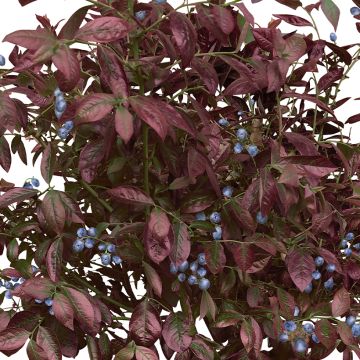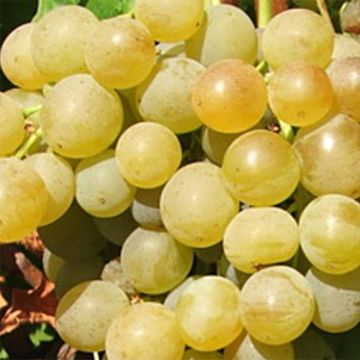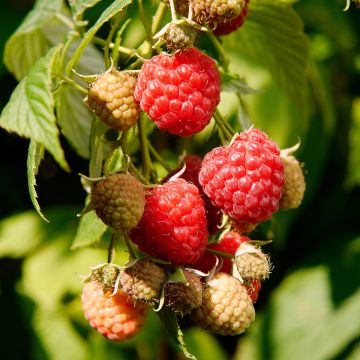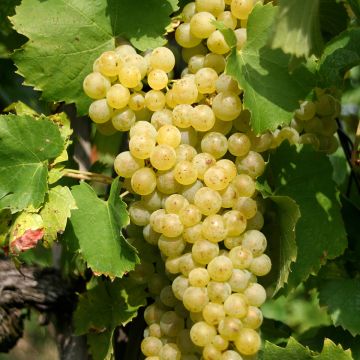Shipping country and language
Your country of residence may be:
Your country of residence is:
For a better user experience on our website, you can select:
Your shipping country:
Andorra
Austria
Belgium
Bulgaria
Canada
Chile
Croatia
Cyprus
Czechia
Denmark
Estonia
Finland
France
Germany
Greece
Hungary
Iceland
Ireland
Italy
Latvia
Lithuania
Luxembourg
Malta
Monaco
Netherlands
Poland
Portugal
Romania
Slovakia
Slovenia
Spain
Sweden
Switzerland
United Kingdom
We only deliver seed and bulb products to your country. If you add other products to your basket, they cannot be shipped.
Language:
French
German
Spanish
English
My Account
Hello
My wish lists
Plantfit
Log in / Register
Existing customer?
New customer?
Create an account to track your orders, access our customer service and, if you wish, make the most of our upcoming offers.


Asimina triloba - Pawpaw


Asimina triloba - Pawpaw


Asimina triloba - Pawpaw
Asimina triloba - Pawpaw
Asimina triloba
Pawpaw, Paw Paw, Paw-Paw, Common Pawpaw, Indiana Banana, American Custard Apple
Quite disappointed as the plant was quite damaged.
Florian , 12/09/2023
Order in the next for dispatch today!
Dispatch by letter from 3,90 €.
Delivery charge from 5,90 € Oversize package delivery charge from 6,90 €.
More information
This item is not available in your country.
Shipping country:
Andorra
Austria
Belgium
Bulgaria
Canada
Chile
Croatia
Cyprus
Czechia
Denmark
Estonia
Finland
France
Germany
Greece
Hungary
Iceland
Ireland
Italy
Latvia
Lithuania
Luxembourg
Malta
Monaco
Netherlands
Poland
Portugal
Romania
Slovakia
Slovenia
Spain
Sweden
Switzerland
United Kingdom
Schedule delivery date,
and select date in basket
This plant carries a 6 months recovery warranty
More information
We guarantee the quality of our plants for a full growing cycle, and will replace at our expense any plant that fails to recover under normal climatic and planting conditions.
From 5,90 € for pickup delivery and 6,90 € for home delivery
Express home delivery from 8,90 €.
Description
The Asimina triloba, or Paw Paw, is a small tropical-looking tree perfectly adapted to temperate climates, enjoying hot summers and cold winters. Fruit production begins when the plant reaches 2 to 2.50 m (7 to 8ft), around 3 to 6 years old. These fruits are edible, appearing alone or in groups on the branches.
Asimines are large oval berries measuring up to 15 cm (6in). The skin is green-yellow when ripe and contains a creamy pulp, usually yellow, dotted with large black seeds. The taste and texture of the asimine resemble both mango and banana. The fruits are harvested when ripe when they become soft to the touch and ready to fall. The harvest lasts for about twenty days, around September. Once harvested, the fruits can be stored in the refrigerator for a few days at room temperature or one to two weeks. Peel the fruits and remove the seeds before consuming. You can eat them fresh or make ice cream, sorbets, juice or compotes. Asimine is rich in vitamins A and C, amino acids, and trace elements.
Little known, the Trilobed Asimina is a shrub native to the United States and Canada and belongs to the Annonaceae family. It is not self-fertile, so it is recommended to plant at least two plants to facilitate pollination. This is carried out by insects (common flies, dung flies or beetles). The rounded floral buds appear at the axil of the leaves from summer and will open in the following spring, around April, just before the appearance of new leaves. They are bell-shaped flowers, 5 cm (2in) in diameter, with six purple petals. They appear alone or in small clusters on the branches.
The Asimina develops a pyramidal habit and can be trained in a goblet shape to facilitate harvesting. At maturity, it can reach a height of 5 to 10 m (16 to 33ft) with a width of about 3 to 5 m (10 to 16ft). In the garden, with regular pruning, this tree can grow to a height of 3 m (10ft) with a width of 2 to 2.50 m (7 to 8ft). Its growth is slow, especially during the first few years as the Asimina first develops its root system. This small deciduous tree is very hardy and can withstand temperatures as low as -25°C (-13°F). Its leaves are alternate, trailing, and have an elongated oval shape. They are green in summer, turning a beautiful yellow colour in autumn before browning and falling.
Asimina triloba - Pawpaw in pictures
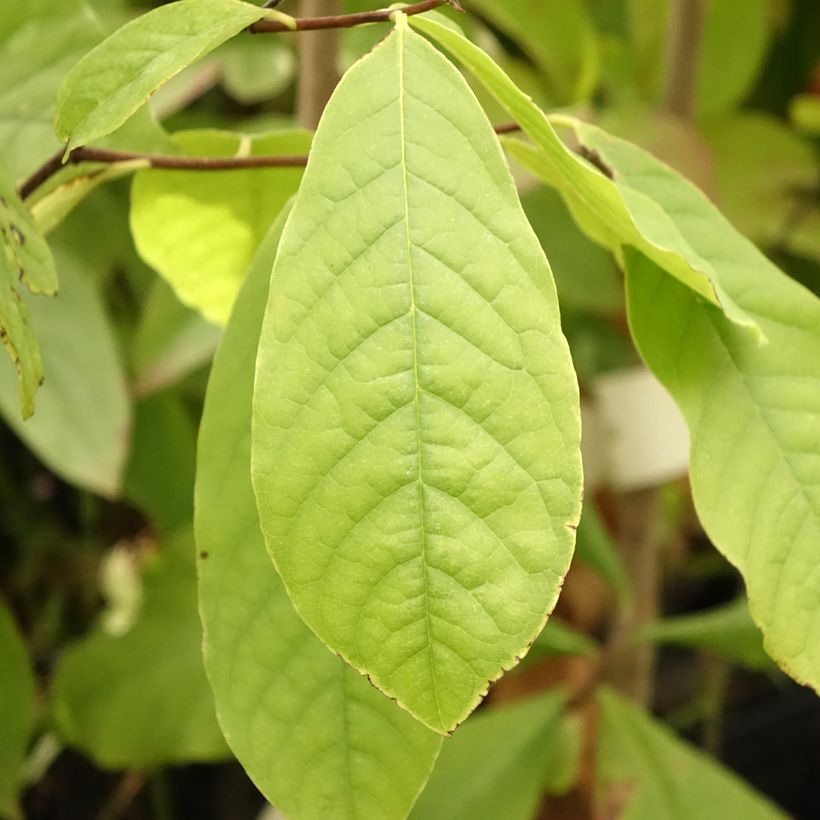

Plant habit
Fruit
Flowering
Foliage
Botanical data
Asimina
triloba
Annonaceae
Pawpaw, Paw Paw, Paw-Paw, Common Pawpaw, Indiana Banana, American Custard Apple
North America
Other Asimina trees
Planting and care
The Pawpaw tree appreciates deep, moderately rich, well-drained soils with a neutral or slightly acidic pH. Plant it in full sun or, if your summers are very hot, in partial shade. Planting is preferably done in February-March, before the start of the vegetation, or in autumn.
Loosen the soil deeply as the Pawpaw tree will develop a long taproot. Space the plants 2.50 to 3 m (8 to 10ft) apart. Dig a wide planting hole (at least 3 times the volume of the root ball). Incorporate compost into the soil and then place the young plant without touching the delicate roots. Fill the hole, firm it well and water generously.
No treatment is necessary as the Pawpaw tree is not very susceptible to diseases or insects. Its leaves even have an insecticidal effect.
Planting period
Intended location
Care
- , onOrder confirmed
Reply from on Promesse de fleurs
Berries
Haven't found what you were looking for?
Hardiness is the lowest winter temperature a plant can endure without suffering serious damage or even dying. However, hardiness is affected by location (a sheltered area, such as a patio), protection (winter cover) and soil type (hardiness is improved by well-drained soil).

Photo Sharing Terms & Conditions
In order to encourage gardeners to interact and share their experiences, Promesse de fleurs offers various media enabling content to be uploaded onto its Site - in particular via the ‘Photo sharing’ module.
The User agrees to refrain from:
- Posting any content that is illegal, prejudicial, insulting, racist, inciteful to hatred, revisionist, contrary to public decency, that infringes on privacy or on the privacy rights of third parties, in particular the publicity rights of persons and goods, intellectual property rights, or the right to privacy.
- Submitting content on behalf of a third party;
- Impersonate the identity of a third party and/or publish any personal information about a third party;
In general, the User undertakes to refrain from any unethical behaviour.
All Content (in particular text, comments, files, images, photos, videos, creative works, etc.), which may be subject to property or intellectual property rights, image or other private rights, shall remain the property of the User, subject to the limited rights granted by the terms of the licence granted by Promesse de fleurs as stated below. Users are at liberty to publish or not to publish such Content on the Site, notably via the ‘Photo Sharing’ facility, and accept that this Content shall be made public and freely accessible, notably on the Internet.
Users further acknowledge, undertake to have ,and guarantee that they hold all necessary rights and permissions to publish such material on the Site, in particular with regard to the legislation in force pertaining to any privacy, property, intellectual property, image, or contractual rights, or rights of any other nature. By publishing such Content on the Site, Users acknowledge accepting full liability as publishers of the Content within the meaning of the law, and grant Promesse de fleurs, free of charge, an inclusive, worldwide licence for the said Content for the entire duration of its publication, including all reproduction, representation, up/downloading, displaying, performing, transmission, and storage rights.
Users also grant permission for their name to be linked to the Content and accept that this link may not always be made available.
By engaging in posting material, Users consent to their Content becoming automatically accessible on the Internet, in particular on other sites and/or blogs and/or web pages of the Promesse de fleurs site, including in particular social pages and the Promesse de fleurs catalogue.
Users may secure the removal of entrusted content free of charge by issuing a simple request via our contact form.
The flowering period indicated on our website applies to countries and regions located in USDA zone 8 (France, the United Kingdom, Ireland, the Netherlands, etc.)
It will vary according to where you live:
- In zones 9 to 10 (Italy, Spain, Greece, etc.), flowering will occur about 2 to 4 weeks earlier.
- In zones 6 to 7 (Germany, Poland, Slovenia, and lower mountainous regions), flowering will be delayed by 2 to 3 weeks.
- In zone 5 (Central Europe, Scandinavia), blooming will be delayed by 3 to 5 weeks.
In temperate climates, pruning of spring-flowering shrubs (forsythia, spireas, etc.) should be done just after flowering.
Pruning of summer-flowering shrubs (Indian Lilac, Perovskia, etc.) can be done in winter or spring.
In cold regions as well as with frost-sensitive plants, avoid pruning too early when severe frosts may still occur.
The planting period indicated on our website applies to countries and regions located in USDA zone 8 (France, United Kingdom, Ireland, Netherlands).
It will vary according to where you live:
- In Mediterranean zones (Marseille, Madrid, Milan, etc.), autumn and winter are the best planting periods.
- In continental zones (Strasbourg, Munich, Vienna, etc.), delay planting by 2 to 3 weeks in spring and bring it forward by 2 to 4 weeks in autumn.
- In mountainous regions (the Alps, Pyrenees, Carpathians, etc.), it is best to plant in late spring (May-June) or late summer (August-September).
The harvesting period indicated on our website applies to countries and regions in USDA zone 8 (France, England, Ireland, the Netherlands).
In colder areas (Scandinavia, Poland, Austria...) fruit and vegetable harvests are likely to be delayed by 3-4 weeks.
In warmer areas (Italy, Spain, Greece, etc.), harvesting will probably take place earlier, depending on weather conditions.
The sowing periods indicated on our website apply to countries and regions within USDA Zone 8 (France, UK, Ireland, Netherlands).
In colder areas (Scandinavia, Poland, Austria...), delay any outdoor sowing by 3-4 weeks, or sow under glass.
In warmer climes (Italy, Spain, Greece, etc.), bring outdoor sowing forward by a few weeks.




